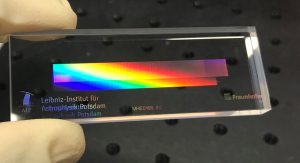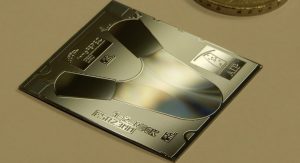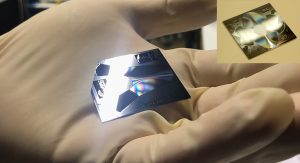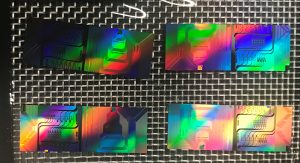Professor Martin M Roth and Dr Kalaga Madhav from innoFSPEC Potsdam explain how astrophotonics is crucial to the new and next generation of astronomy infrastructure.
The innovation centre innoFSPEC Potsdam is registered at the Deutsches Patent- and Markenamt since 2008 as a joint venture between the University of Potsdam and the Leibniz-Institute for Astrophysics Potsdam (AIP). It has been enabled with substantial funding from the ‘Unternehmen Region’ programme of the German Ministry for Education and Research (BMBF). Under the motto ‘From Molecules to Galaxies’, innoFSPEC engages in a variety of interdisciplinary research fields ranging between physical chemistry and astrophysics, whilst sharing the common methodological grounds of photonics. Considering that truly interdisciplinary research has to overcome significant hurdles that separate different disciplines and specialists working therein, AIP innoFSPEC boasts scientists, graduates, masters, and undergraduate students from ten different countries, speaking 17 languages, all talking about the same subject. The centre thus provides, as well as benefited from, a unique opportunity to develop interdisciplinary ideas beyond the conventional borders of science.
Astrophotonics
While photonics can be defined as a technology that utilises the interaction of light (‘photons’) with matter, analogous to electronics that is based on the interaction of electrons with matter, astrophotonics has appeared as a relatively new term. Astrophotonics is understood as the application of photonics to guide, filter, disperse, or otherwise manipulate light from celestial objects collected by telescopes either on the ground or in space. While astronomy is enjoying what has sometimes been alluded to as a ‘golden age’ thanks to the progress in optical technologies and instrumentation, it has only recently been discovered that photonics technologies, which have emerged and rapidly evolved in recent decades (mainly in the telecommunications sector) harbour enormous potential for innovation in astronomical instrumentation.
Implicitly, a revolution has already happened with the introduction of photonic image sensors like the CCD detector some 50 years ago. With a 100-fold gain in quantum efficiency, a 10,000-fold gain in dynamic range, and the advantage of an electronic signal that is ready for immediate image processing on a computer, CCDs have quickly outperformed photographic plates, leading to enormous progress for direct imaging techniques and spectroscopy.

Next generation – getting bigger
Our current understanding about the history and evolution of the Universe, with observations reaching back more than 12 billion years into the infancy of the cosmos, would have been impossible without this innovation. Photonics, in the narrower sense of optical fibres and waveguides in photonic integrated circuits (PICs), is now paving the way for next generation instruments in the optical and near infrared wavelength regions.
Astronomy is currently in the process of developing telescopes of enormous size, with primary mirrors as big as 30-40 metres in diameter. Quite rightfully, these telescopes, currently under development, are called ‘Extremely Large Telescopes’ – for instance, the 39.3m ELT now being built by the European Southern Observatory (ESO) in the Atacama Desert in Chile. This telescope means roughly a five-fold increase in linear dimension of the current state-of-the-art, and a 25-fold increase in light-collecting area. While such giant telescopes are necessary in order to break current limits of access to the most distant Universe, the focal plane instruments for those telescopes are growing at the same pace: for example, the imaging cameras and spectrographs under development for the ELT come at a size and volume of a family home! In order to break the cost and risk issues associated with such sizes, photonics offers smart, powerful, and cost-effective solutions with a trend to miniaturised components that can help to significantly reduce the footprint of next generation instruments.
Historically, this is a trend similar to that seen in electronics, where transistors have replaced electron tubes, leading eventually to VLSI circuits with up to a billion transistors within a single compact package – impossible to achieve with bulky and heat dissipating tubes. Likewise, photonic devices can be made compact, with volumes of a few tens of cm3, and lightweight, on the order of a few hundred grams. An additional benefit is high thermal and mechanical stability. Moreover, photolithographic techniques, which are commonplace in electronics, can be used for the mass production of photonic components, thus making them also very cost-effective.
The photonic revolution
While photonic integrated circuits have matured to commercial products in telecommunications, medicine, military, computing, robotics, wearables etc., astrophotonics is still in its infancy and shows enormous potential. However, it is clear that the development of astrophotonics components and instrument must be a key priority for the future. With the advent of space exploration, in particular the privatisation of space travel, the ‘SWaP-C’ (size, weight, power and cost) advantage of photonic devices cannot be denied. From the industrial revolution to the semiconductor revolution to the information revolution, we are now entering the age of the photonic revolution.
Some successful key astrophotonic components developed in the recent past include:
Optical fibres
The Nobel Prize in Physics 2009 was partly awarded to Charles Kuen Kao ‘for ground-breaking achievements concerning the transmission of light in fibres for optical communication’ – in other words: the backbone of what is known as the Internet. Optical fibres have not only been extremely successful in the telecoms sector, but they have also led to innovation in astronomical instrumentation. The flexible routing of fibres has replaced free-space optics, thus allowing bulky spectrographs to be placed into stabilised cabinets far away from the telescope by connecting them to the focal plane with a fibre.
The introduction of multiplex is another area which should not be underestimated: instead of observing one single galaxy at a time, often with exposure times of many hours to reach a certain signal-to-noise level, many fibres on the order of many hundreds can be placed at the loci of images of stars or galaxies over the accessible field of view in the focal plane of the telescope, therefore boosting the efficiency of observations by factors of 100 to 1,000.
Photonic lanterns
In the focal plane of a ground-based telescope, the image of an infinitely distant object such as a star is characterised by the diffraction pattern of the optical system, convolved with the broadening function of atmospheric turbulence. Unfortunately, this broadening is orders of magnitude wider than the diffraction limited image itself. As a consequence, the image of a point source appears as a somewhat extended spot, called the ‘seeing disk’. Because of this, optical fibres used in telescopes must have a sufficiently large core diameter, and they are called ‘multimode fibres’ (MMF). However, photonic devices cannot handle modes higher than the fundamental single-mode. A photonic lantern is an adiabatic taper that allows for a low-loss transition from a multimode fibre to several single-mode fibres, or vice versa. It is thus a key component for astrophotonic devices.


Complex Bragg gratings
Fibre Bragg gratings (FBG)) are being used as standard components for sensing temperature and mechanical parameters such as strain or bending, or in telecommunications as add/drop devices. Highly complex aperiodic gratings (fibre or waveguides) have been pioneered as extremely sharp multi-line filters with up to 100 notches at carefully designed filter wavelengths. Such devices have great promise to filter out the very disturbing ubiquitous infrared sky OH emission lines that are known to significantly limit the sensitivity of extremely large telescopes. Such filters can be fabricated using complex phase masks (see Fig. 1) and high power ultraviolet laser at 244nm wavelength.
Pupil remappers
The entrance pupil of a telescope can be broken down into segments using deformable mirrors to enhance the angular resolution by means of a combination of adaptive optics with a smart recombination of the subaperture beams in an interferometric beam combiner. Such functions can be realised with a photonic chip and a careful design of waveguides which interact with each other to accomplish the beam combination and interferometry. By using a photonic chip, light from multiple points on a single large mirror can be combined to generate a high-resolution detailed image of a star.
Interferometers
Over the last decade, progress in combining the light of multiple optical telescopes with distances of tens or even hundreds of metres have led to angular resolutions equivalent to the diffraction limit of a telescope with a diameter on the order of the baseline of the telescope array. GRAVITY at the VLT Interferometer (VLTI) is a prominent example of such an instrument, that has, for example, enabled demonstrations of predictions of Einstein’s General Relativity through observations of the supermassive black hole at the centre of our Milky Way galaxy. Conventionally, the beam combination of interferometers was accomplished with free space optics setups, which are notoriously difficult to align and to keep stable. GRAVITY is the first instrument of its kind that has employed an integrated photonic chip beam combiner to collect light from multiple telescopes.

Integrated photonic spectrographs
Wavelength selection for multiplexing in telecommunications resulted some 30 years ago in the realisation of dispersion with a photonic chip. The arrayed waveguide grating (AWG, see Fig. 2) uses an on-chip phased array structure of waveguides to introduce different path lengths whose net effect is creating a dispersion with wavelength on the output of the device. Instead of wavelength multiplexing, this principle can also be used to build ultralightweight, miniaturised spectrographs on-a-chip for astronomy that can separate incoming star light into its component wavelengths.
Photonics frequency combs
The ability to detect exoplanets depends on the ability to detect the gravitational wobble of sun-like stars hosting habitable planets. The wobble of the star causes a Doppler shift in the light emitted by the star and that can be detected by extremely sensitive detectors. However, in order to know the properties of the exoplanet, we have to precisely quantify the extent of the Doppler shift in the wavelengths emitted by the star against an extremely stable wavelength reference.
The generation of such wavelength references or ‘frequency combs’ have led to 2005 Nobel Prize in Physics for Theodor Hänsch. Such combs can be generated using photonic chips (see Fig. 3) using the non-linear behaviour of materials, such as silicon nitride, when they are exposed to high power lasers.
Professor Martin M Roth
Dr Kalaga Madhav
Head of Astrophotonics
innoFSPEC Potsdam
+49 331 7499 313
+49 331 7499 390
mmroth@aip.de
kmadhav@aip.de
https://innofspec.de/en/
Please note, this article will also appear in the third edition of our new quarterly publication.









